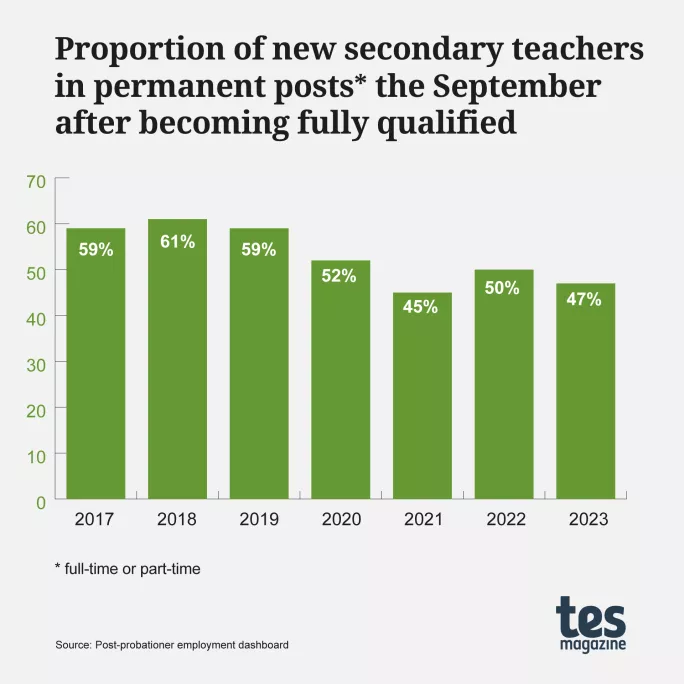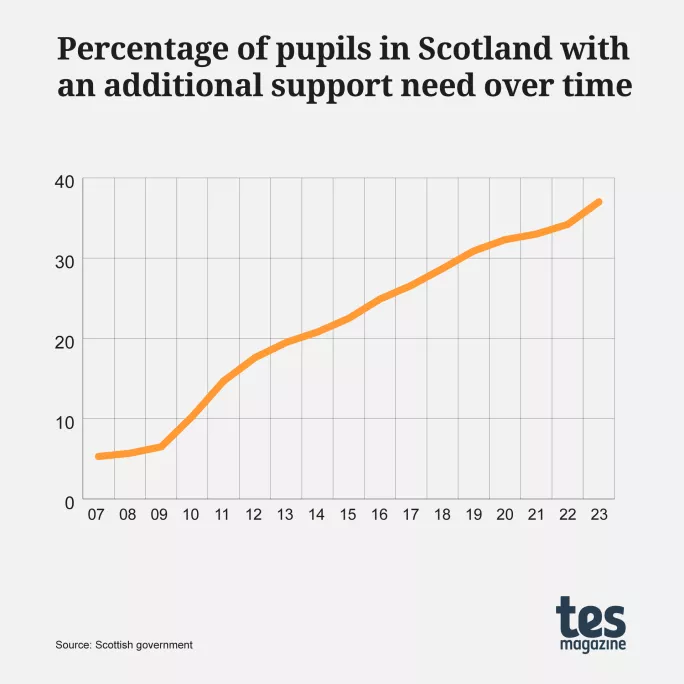School attendance in Scotland drops to record low

School attendance in Scotland is at its lowest level in the two decades since the current form of recording began.
The attendance rate in 2022-23 was 90.2 per cent, down from 92 per cent in 2020-21 (these figures are reported every two years).
This is the lowest rate since comparable figures began being recorded in 2003-04.
One piece of University of Strathclyde research published last year found that a 1 per cent increase in days absent was associated with a 3 per cent decline in educational attainment.
Meanwhile, an Education Scotland report on attendance published in November said that progress, attainment and achievements can be affected by any absence - and that attendance falling below 90 per cent was particularly concerning
Pupils with an attendance rate of 90 per cent or less have at least one day off a fortnight over the school year.
- Advice: How to improve school attendance
- School absence: Many Scottish secondary students missing a day a week
- Related: Why Scotland urgently needs better pupil absence data
- Wales: School attendance task force to be set up
- England: What’s gone wrong with attendance and how can we fix it?
A host of education data was published by the Scottish government today, including figures on teacher numbers - part of a wide range of areas covered in the 2023 edition of Summary Statistics for Schools in Scotland - and the Achievement of Curriculum for Excellence levels, which look at the attainment in literacy and numeracy.
Drop in posts for probationers
Today’s statistics will also make for a sobering read for new teachers.
The proportion of Teacher Induction Scheme probationers that secured a (permanent or temporary) teaching post in a Scottish school in the year following their probation increased slightly to 71 per cent in 2022-23 from 70 per cent for the 2021-22 cohort. This follows the drop last year from 80 to 70 per cent.
However, just 17 per cent of new primary teachers who completed their probation in the school year 2022-23 had found a permanent post in a state school by September. That is down from 20 per cent last year.

In 2017, 58 per cent of new primary teachers found permanent full-time or part-time posts in the wake of becoming fully qualified.
The proportion of new primary teachers in temporary posts rose slightly to 38 per cent (from 35.5 per cent last year).
In secondary, the proportion of new teachers finding permanent full-time or part-time posts by September of this year also fell. Of those who carried out their probation in 2022-23, 47 per cent had a permanent post by September, down from 50 per cent in September 2022.

There was a rise in the proportion of new secondary teachers in temporary posts, from 27 per cent last year to 35 per cent this year.
There were 11,676 cases of exclusion in 2022-23. This is 40 per cent higher than the Covid-affected 2020-21 school year but 22 per cent lower than 2018-19.
Record proportion of pupils with ASN
Today’s figures also show a record proportion of pupils with additional support needs (ASN).
In 2023, 37 per cent of all pupils (259,036) had an ASN. This is 2.8 percentage points higher than 2022, when 34.2 per cent of pupils had an ASN.
The percentage of children eligible to defer entry to P1 who did so increased from 27 per cent in 2022 to 33 per cent in 2023.

Previously, a Tes Scotland investigation in April revealed that the number of children deferring entry into P1 had increased substantially following a change in the law, which means all children who would be aged 4 when they start school are entitled to an extra year of funded nursery.
Flagship early years policy
There is also data relating to the flagship Scottish government policy of almost doubling funded early learning and childcare (ELC) hours.
The number of teachers, graduate staff and staff working towards graduate-level early years qualifications who are delivering funded ELC reached 5,906 full-time equivalent in 2023.
The government said this was the highest figure since it started collecting graduate data in the ELC census in 2017, and an increase of 230 FTE from 2022.
Child registrations for funded ELC decreased this year to 92,182, down from 92,615 in 2022.
The estimated uptake rate for ages three and four decreased from 99 per cent in 2022 to 97 per cent in 2023.
The proportion of two-year-olds registered for funded ELC decreased from 14 per cent in 2022 to 13 per cent this year. This is estimated to be around 52 per cent of those eligible for funded ELC at age two.
You need a Tes subscription to read this article
Subscribe now to read this article and get other subscriber-only content:
- Unlimited access to all Tes magazine content
- Exclusive subscriber-only stories
- Award-winning email newsletters
Already a subscriber? Log in
You need a subscription to read this article
Subscribe now to read this article and get other subscriber-only content, including:
- Unlimited access to all Tes magazine content
- Exclusive subscriber-only stories
- Award-winning email newsletters
topics in this article



